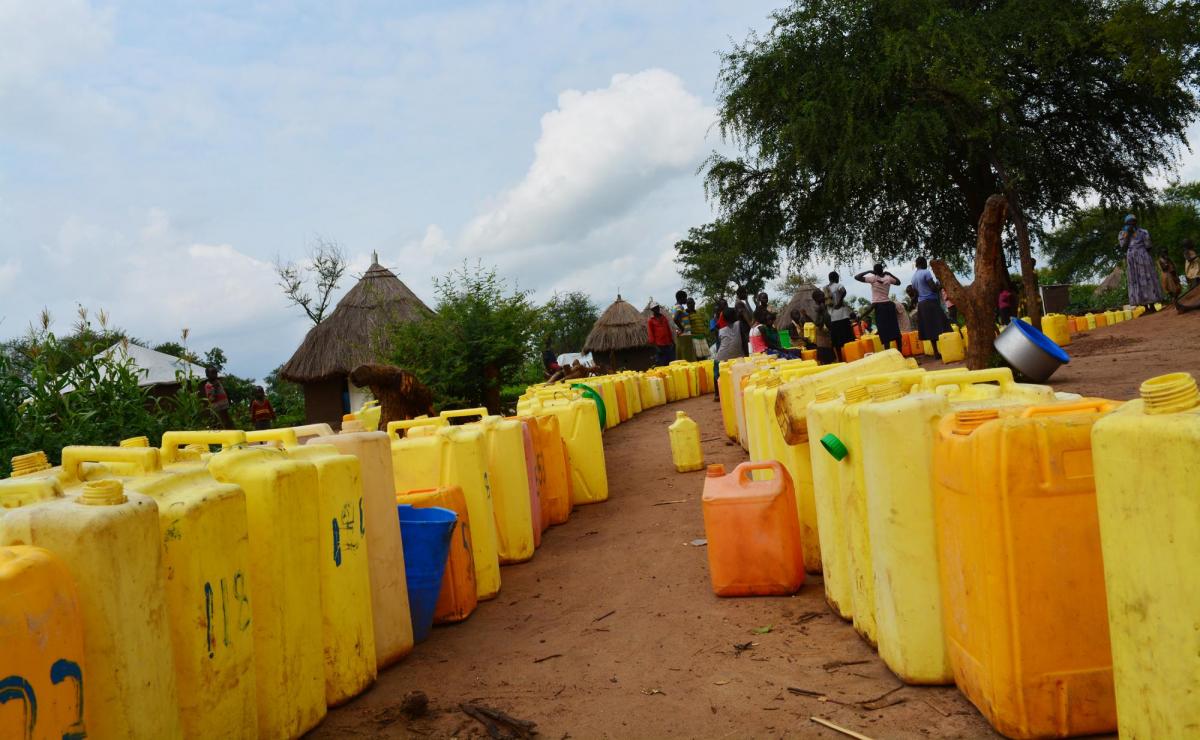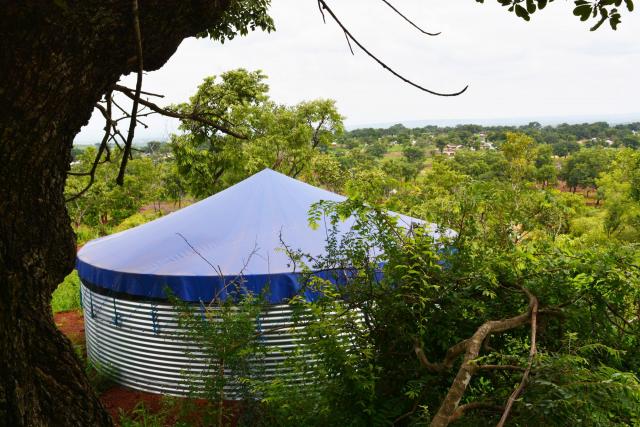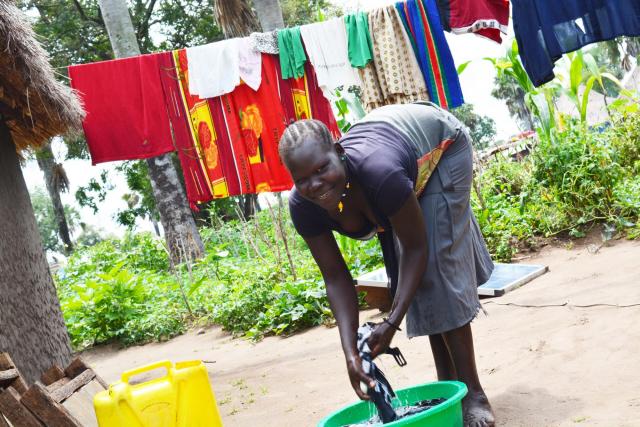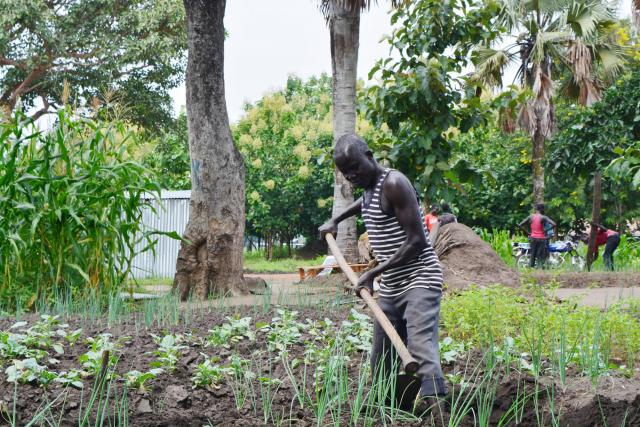Getting water from underground and the Nile to thousands of refugees

Long snake-like lines of yellow jerry cans filled every water point, hundreds of people scattered all over the place, waiting to get a drop of life-water. These waited for hours in queues which were existent for at least 20 hours a day. Some people used to be at the water points before dawn and others would stay past dusk. This was the water situation at the opening of Palorinya settlement in December, 2016 as narrated by James Drichi, the Lutheran World Federation’s (LWF) Water, Sanitation and Hygiene Officer, who was on ground supervising waterworks.
At the opening of the settlement, there were only 8 boreholes to serve both the host and refugee community, and these needed to be rehabilitated. Thousands of people on approximately 1,500 square miles depended on the 8 boreholes yet more refugees in thousands arrived at the settlement on a daily basis.
“New refugee arrivals needed water most as they often arrived thirsty, but getting a drop in the ocean also seemed impossible,” says Drichi. He recounts that water became scarce yet its demand was very high in Palorinya settlement, which is located in Moyo district, north-western Uganda.

Water tanks installed, water trucked, boreholes drilled and motorised
“To make water accessible to all, we installed 10,000-litre water tanks in places far away from the boreholes,” said Drichi. Together with his team, Drichi says they filled tanks at least two times a day, which also seemed insufficient.
According to Drichi, together with his team, they would collect and truck water from Obongi water point to water tanks in the settlement, which is a 27-kilometre journey. “Médecins Sans Frontières would draw and treat water from River Nile, which we would supply to refugees,” he added.
“We made sure to brand water tanks with our telephone numbers for refugees to call in case they run out of water. Even with two refills a day, we still got over a hundred calls and more a day demanding for more water,” he added.
Even with the regular water tank refills and available boreholes, people lived on a few litres of water compared to the sphere standard of 15 litres per person per day .
To boost the water supply, LWF, with support from UNHCR, executed hydro-geological surveys to unearth borehole wells. “We aimed at getting more high yielding boreholes to extend more water to people,” Drichi said.
According to LWF’s goal, Kibet explains that each person in the settlement had to get at least 15 litres of water per day. This would be used for cooking, bathing, cleaning and drinking as the World Health Organization report states that, three litres should be for drinking, to avoid dangerous dehydration.
“Other than drinking, bathing and cleaning up was our priority, in order not to contract waterborne diseases, such as cholera, in case of poor hygiene due to insufficient water,” he added.
Within a period of 7 months since the opening of the settlement, LWF had drilled 77 boreholes, some of which were high-yielding, with over 17,000 litres of water per hour.
“With the high yields, each borehole has a capacity to supply 9,600 people per day with at least 15 litres, if motorized,” Drichi said. (motorization is when a generator or solar systen is used to pump water from a borehole well to raised water tanks through pipes and supplied to consumers with the help of gravity).
However, only 3 of these have been motorized due to limited funds. Richard Wakholi, LWF’s Water, Sanitation and Hygiene (WASH) Co-ordinator says that it requires an average of USD 7,3,611 to motorise a borehole.
With the 3 motorized boreholes, 107 functional hand pump boreholes and water trucking, each person in Palorinya settlement gets an average of 16 litres of water as of UNHCR WASH report 06/2017.

Water extension efforts pay off
Water dearth has been minimalised. Drichi says with water trucking, borehole hand pumps and motorized ones, each person in Palorinya gets an average of 16 litres of water per day.
With the extensive water supply, people’s hygiene has improved, long queues at water points are now rare and people are also engaging in livelihood activities that require water, such as agriculture.
“My home is clean, my children and I wear clean clothes because a borehole is a few steps from our home,” Said 22-year-old Florence who collects at least eight 20 litre jerry cans of water every day for her 10-people family.
Celina Konga, another South Sudanese refugee in Palorinya, says with access to water, the hygiene in her home has improved as her children get to bathe and clean up their house and toilet regularly hence preventing waterborne diseases.
Wilson Orube, a father of 8, uses the water to irrigate his vegetable garden.

A sustainable solution for water supply in Palorinya
Despite the extensive water supply, it (supply) largely depends on water trucking, an expensive and unsustainable method as described by UNHCR’s WASH Co-ordinator, Jane Maonga. Drichi re-echoes Maonga’s statement, saying water supplied through trucking accounts for 55% and only 45% is got from sustainable systems, such as boreholes as of LWF’s WASH Sector progress report for June 2017.
Wakholi, explains that each 1,000 litres of water supplied through trucking costs over 20 USD, an expense which is not sustainable. “Palorinya is next to River Nile, which makes the surface water supply a perfect solution,” he added.
LWF’s water supply efforts in Palorinya settlement are funded by UNHCR, the Canadian Lutheran World Relief, European Union and ActAlliance.

